Brand Stories
Travel Companies Spent Big in the Second Quarter on Lobbying
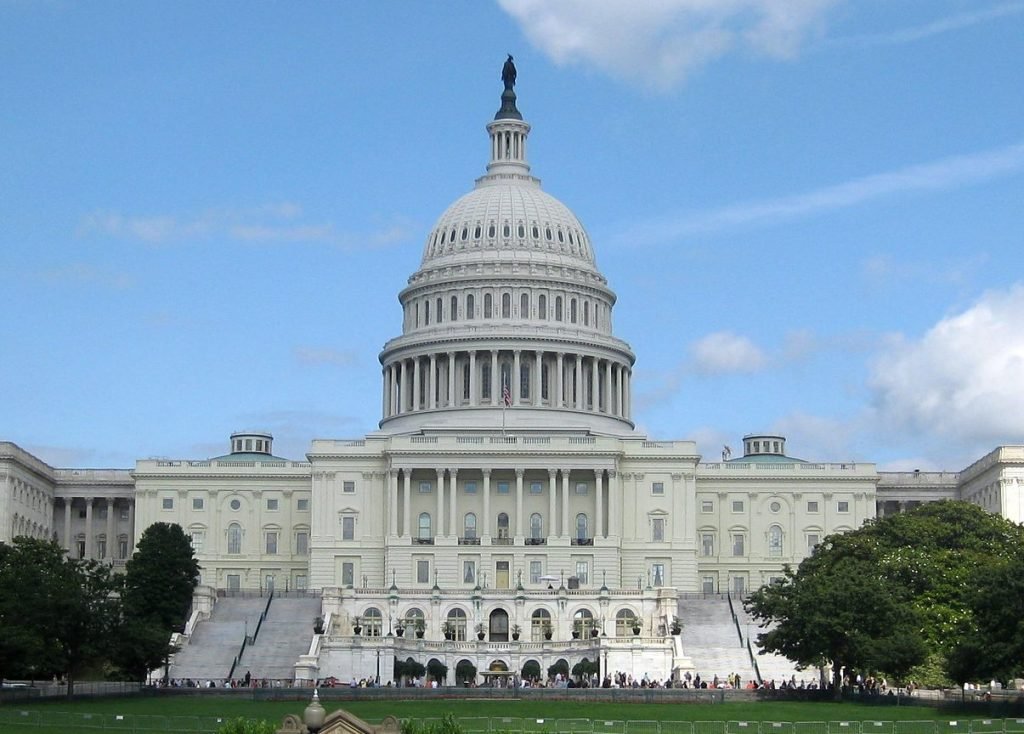
From April through June, the tourism and travel industries grappled with several political challenges at once: President Donald Trump’s “Liberation Day” tariff turbulence. Messy debates over the “One Big Beautiful Bill.” U.S. travel bans and declining tourism from abroad.
In response, many of the nation’s biggest airlines, hotels, travel service companies, and associated trade associations spent bigger-than-usual amounts to lobby Congress and the Trump administration, according to a Skift analysis of new federal lobbying disclosure documents filed Monday.
This government influence spending, which includes money spent on both in-house and for-hire lobbyists in Washington, D.C., is designed to defend industry and corporate interests and advocate for favorable policies and legislation.
Among the notable revelations:
Where Spending Rose
Trade Groups: The U.S. Travel Association reported a spike in its lobbying activity during the second quarter ($1.03 million) versus a year earlier ($900,00).
It was also well beyond what it spent during the same period in 2021 during Joe Biden’s first year as president ($840,000) and in 2017 during the first year of Trump’s first term ($640,000).
“Lobbying expenditures during the first year of a new presidential administration or new Congress typically increase — along with legislative and regulatory action — compared to the previous year,” U.S. Travel Association spokesperson Spencer
Brand Stories
US Military Expands AI Investment With $800 Million in Contracts

The Pentagon recently awarded up to $200 million each to four U.S.-based artificial intelligence (AI) companies developing “frontier” models: Anthropic, Google, OpenAI and xAI. The contracts are the latest sign of AI adoption across the U.S. military.
Brand Stories
Credit cards that offer hotel perks: How they work and who should get one
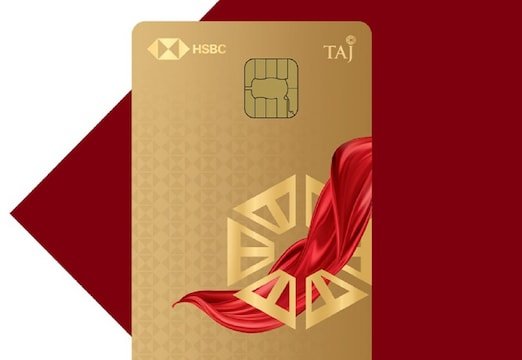
Some cards are co-branded with hotel chains, while others provide broad travel benefits across multiple brands.
Cards with hotel benefits (as compiled by Paisabazaar)
HSBC Taj Credit Card offers 25% savings on Taj hotel stays, room upgrades, dining discounts, free night stays and Taj InnerCircle Platinum membership.
Marriott Bonvoy HDFC Credit Card provides Marriott Bonvoy Silver Elite status, free night awards based on spending milestones, and Marriott Bonvoy Points on hotel and travel spends.

American Express Platinum Charge Card includes memberships with loyalty programmes such as Marriott Bonvoy Gold Elite, Hilton Honors Gold Elite, Taj Epicure Plus and others. Cardholders get room upgrades, complimentary breakfasts, and special rates at luxury hotels including Oberoi and Lalit.
Axis Bank Reserve Credit Card offers memberships like ITC Culinaire, Accor Plus and Club Marriott. Benefits include free night stays, dining discounts, room upgrades, and exclusive offers at partner hotels.
HDFC Infinia Credit Card (Metal Edition) provides Club Marriott membership, discounts and offers at ITC Hotels, and higher reward points on travel bookings through SmartBuy.
ALSO READ | How luxury hotels in India are evolving insurance practices with modern needs
ICICI Emeralde Private Metal Credit Card gives Taj Epicure membership, reward points on hotel bookings via iShop, and options to redeem points for hotel vouchers.
Axis Atlas Credit Card allows cardholders to earn EDGE Miles that can be converted into hotel loyalty points with partners like Accor, Wyndham, ITC and Marriott.
Hotels say these co-branded card tie-ups help build guest loyalty.
KB Kachru, Chairman, South Asia, Radisson Hotel Group, says, “Co-branded credit card partnerships are a powerful lever in enhancing guest loyalty and encouraging repeat stays. These collaborations extend the reach of our loyalty program beyond the hotel stay, allowing members to earn points on everyday purchases—making engagement with the brand more frequent and meaningful.”
He adds that Radisson has partnered with American Express and is exploring more local tie-ups to expand its base in India.
Arjun Baljee, Founder of Iconiqa and President of Royal Orchid Hotels, says, “Co-branded card partnerships help hotels remain top of wallet by allowing guests to earn points not only during stays but also through everyday spends, strengthening their transactional connection with the brand.”
Both hotel groups note that guests are redeeming more points and free night vouchers than before.
According to Kachru, redemption rates have increased, especially for leisure trips and festive stays. Baljee says guests often use points and vouchers on weekends and staycations.
Such premium hotel credit cards are generally used by frequent travellers and high spenders who stay at partner hotels and spend enough to benefit from loyalty rewards. Whether to use one depends on how often a person travels, their spending habits and if they can make full use of the perks relative to the annual fee, experts say.
ALSO READ | From points to perks: What hotel loyalty programmes are and who should join
Brand Stories
Kakao, Naver step up global AI hunt amid fierce tech race
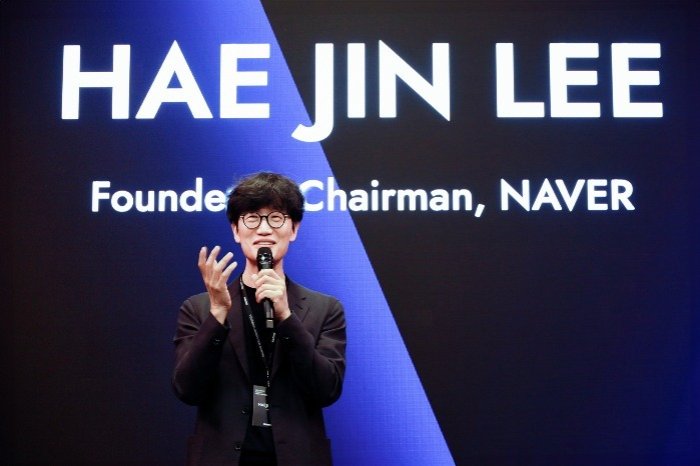
South Korea’s internet pioneers, Kakao Corp. and Naver Corp., are ramping up overseas investments in artificial intelligence startups, shifting focus to North America in a move that is raising concerns among domestic startups over tighter funding at home.
After a two-year lull, both companies have resumed active startup investing but with a markedly global tilt.
The pair, which respectively backed about 20 startups annually during 2021–2022, have since cut that pace by more than half, according to Seoul-based tracker The VC.
Now, their investments are skewed toward US-based companies developing next-generation AI technologies in hopes of tapping innovations that align with their core platforms or open up new growth paths.
AI IS A MUST FOR ANOTHER LEAP
According to the investment banking industry on Tuesday, Naver Cloud Corp., a cloud computing arm of Naver, recently led a Series A funding round for Urban Datalab, the developer of an AI medical platform, MeDiAuto, with its own investment of 3.5 billion won ($2.5 million).
Naver’s newly launched Naver Ventures also made its debut investment in TwelveLabs, a Silicon Valley-based startup with an unrivaled multimodal AI technology that has already attracted big-name backers, including Nvidia, Samsung Electronics Co. and Intel Corp.
“We are open to collaboration (between Naver and TwelveLabs) next year or later,” said Kim Sung-ho, head of Naver’s Immersive Media Platform team.
Naver’s renewed push into AI investing has gained further momentum since its founder Lee Hae-jin returned as chairman earlier this year.
“If David wants to beat Goliath, he must aim well with the right stone,” said Lee at a ceremony celebrating the opening of Naver Ventures, the company’s first dedicated overseas venture capital in Silicon Valley, last month. “We are in the middle of picking the right stone.”
In this analogy, Naver is the underdog battling US tech giants in the AI race.
Naver’s in-house corporate venturing (CV) team, D2SF, has also made a series of AI-focused investments this year.
It has invested in AI-powered logistics platform startup Techtaka; AI game developer Anchor Node; AI-supported autonomous driving technology developer whereable.ai; and multi-modal commerce AI startup Studio Lab.
Kakao has been similarly active in investing in AI companies.
According to The VC, Kakao Investment Co., Kakao’s venture investment arm, has recently invested 3 billion won in Seoul-based AI chip startup FurisosaAI Inc.
Its another venture capital company, Kakao Ventures Corp. has joined early-stage funding rounds of AI agent developer Tzafon and large language model startup Trillion Labs.
NORTH AMERICA EMERGES AS A NEW BATTLEGROUND
While the uptick in tech investment is a welcome shift after years of slowdown, Korean startups now worry they may be left behind.
Historically reliant on Kakao and Naver for early-stage capital, domestic startups fear the funding tide may be turning westward – just as global AI interest is surging.
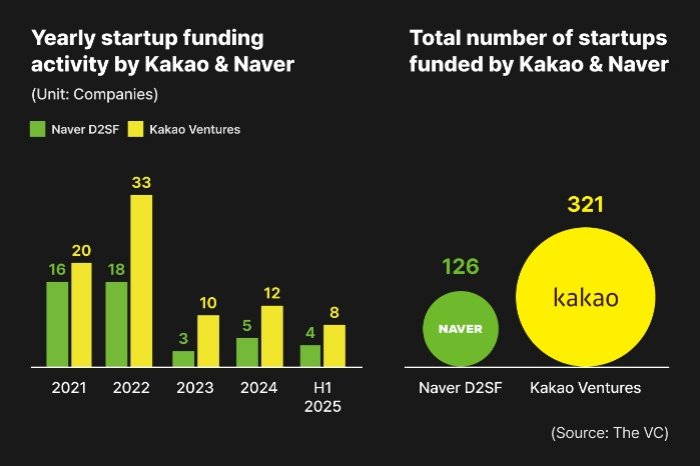
Of five startups Naver D2SF has invested in 2024, three are US-based, including 3D content developer Claythis and YesPlz AI, a fashion-focused multimodal AI developer.
Kakao Ventures has also invested in FS2, a 3D AI chip design company led by MIT engineers; Oligo Space, an automated spacecraft design and production toolchain developer; and medTech startup Kompass Diagnostics.
To deepen its reach in the North American venture capital ecosystem, Naver opened D2SF’s US office in Silicon Valley last year and launched Naver Ventures in the global tech hub to scout growth-stage firms.
Kakao Ventures’ officials regularly visit the US once every two to three months to build ties with local VCs, engineers and researchers.
Investors see more room for upside in US startups than in their Korean counterparts, offering greater synergy.
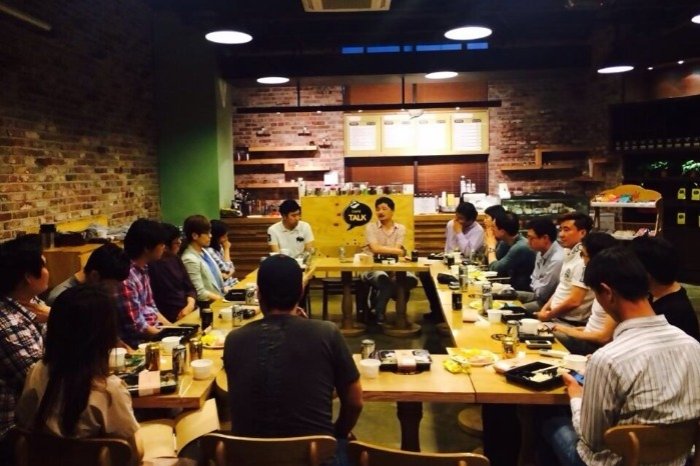
“The ecosystem for tech-based startups is more mature in the US, and top US universities generate stronger pipelines of investable early-stage companies,” said an official from a Korean VC company.
The trend also reflects a strategic calculus, said industry observers.
Korean tech giants face less public scrutiny abroad compared to frequent domestic criticism over big tech firms’ aggressive M&A moves with startups after investment.
That’s prompting concern that capital could increasingly flow to overseas startups instead of bolstering the local tech scene.
“Startup funding is borderless,” said an official in the VC industry. “Without competitiveness to appeal globally, any startups won’t survive.”
Write to Eun-Yi Ko at koko@hankyung.com
Sookyung Seo edited this article.
-

 Brand Stories3 days ago
Brand Stories3 days agoBloom Hotels: A Modern Vision of Hospitality Redefining Travel
-

 Brand Stories2 days ago
Brand Stories2 days agoOlive Living: India’s Intelligent, Community-Centric Hospitality Powerhouse
-

 Destinations & Things To Do3 days ago
Destinations & Things To Do3 days agoUntouched Destinations: Stunning Hidden Gems You Must Visit
-

 AI in Travel3 days ago
AI in Travel3 days agoAI Travel Revolution: Must-Have Guide to the Best Experience
-

 Brand Stories3 weeks ago
Brand Stories3 weeks agoVoice AI Startup ElevenLabs Plans to Add Hubs Around the World
-

 Brand Stories2 weeks ago
Brand Stories2 weeks agoHow Elon Musk’s rogue Grok chatbot became a cautionary AI tale
-

 Asia Travel Pulse3 weeks ago
Asia Travel Pulse3 weeks agoLooking For Adventure In Asia? Here Are 7 Epic Destinations You Need To Experience At Least Once – Zee News
-

 AI in Travel3 weeks ago
AI in Travel3 weeks ago‘Will AI take my job?’ A trip to a Beijing fortune-telling bar to see what lies ahead | China
-

 Brand Stories3 weeks ago
Brand Stories3 weeks agoChatGPT — the last of the great romantics
-

 The Travel Revolution of Our Era1 month ago
The Travel Revolution of Our Era1 month agoCheQin.ai Redefines Hotel Booking with Zero-Commission Model











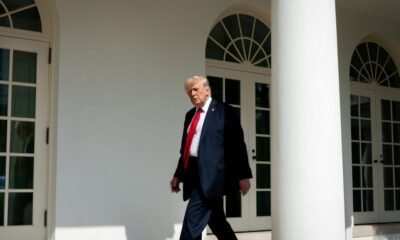

You must be logged in to post a comment Login